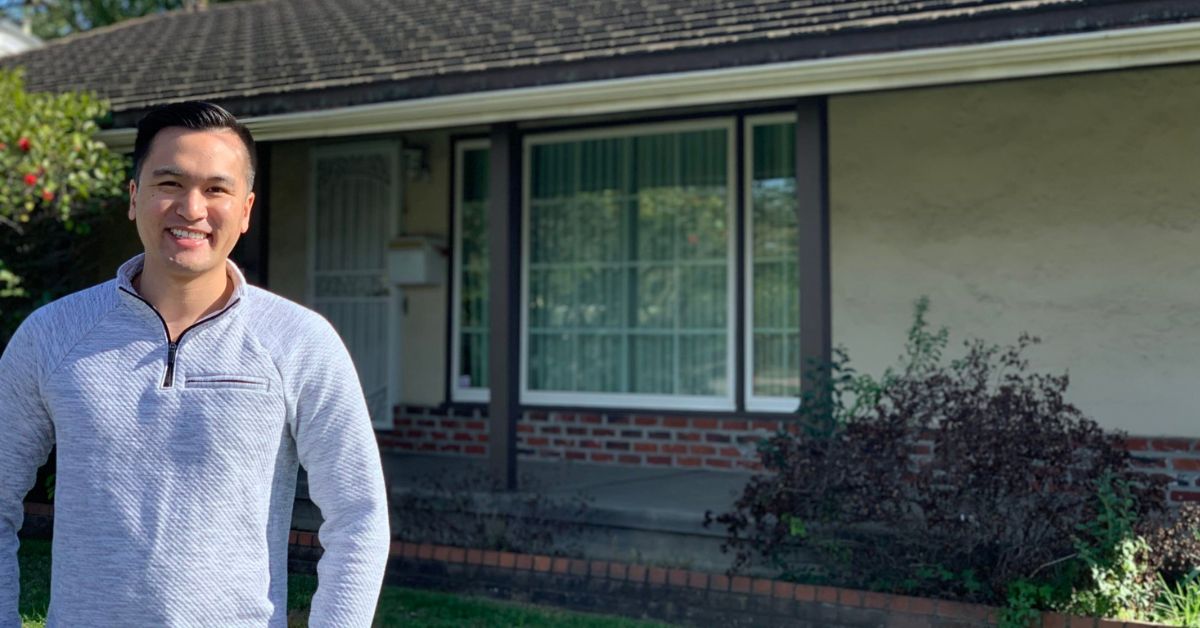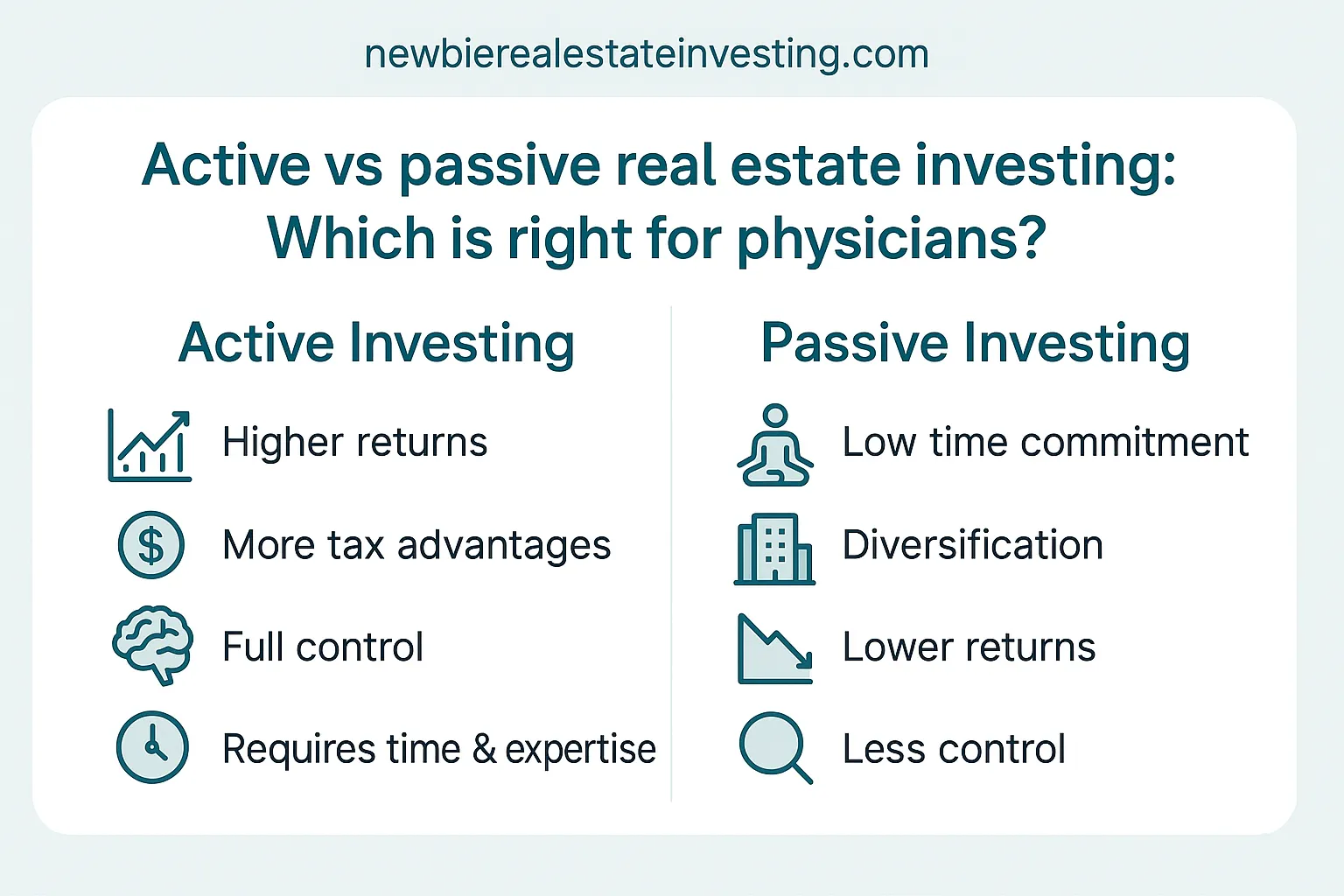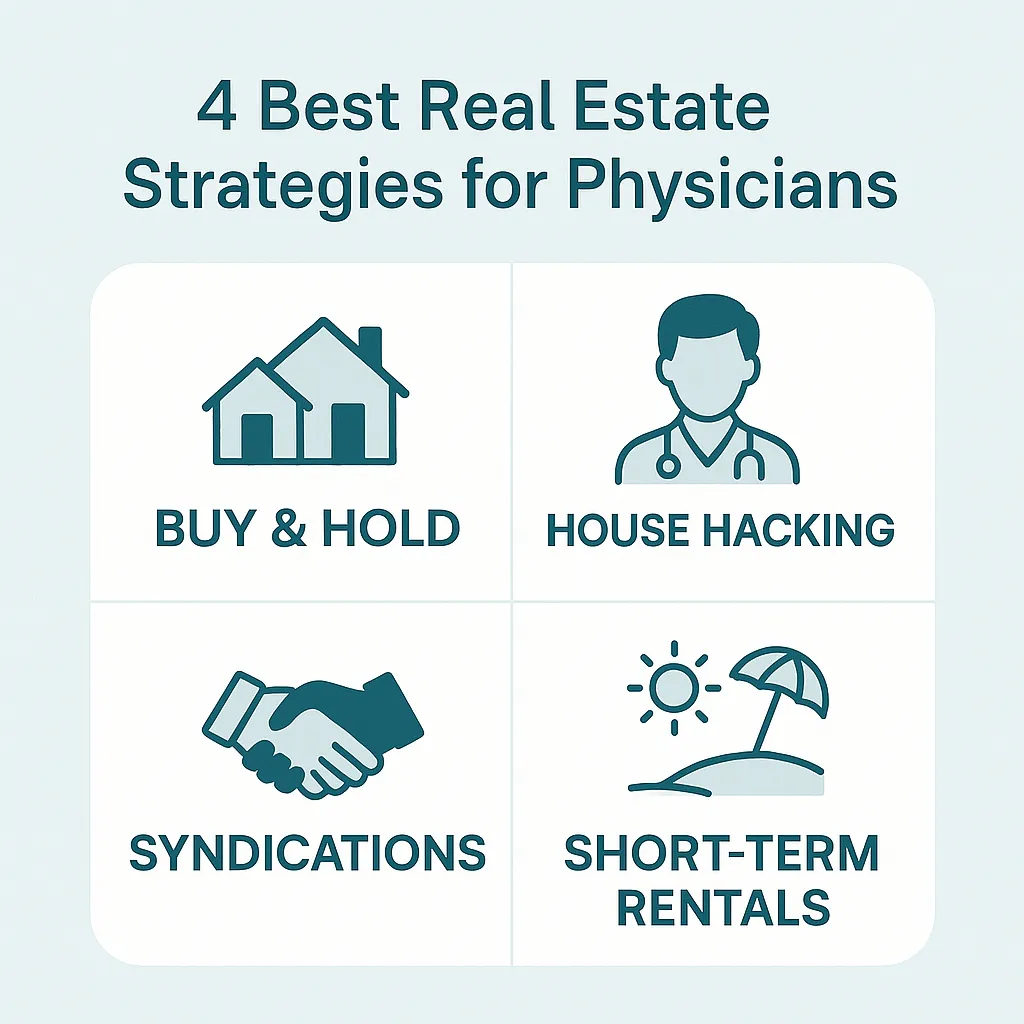Are you a busy physician looking for a way to create passive and diversified income—and maybe even retire early?
Then you’re in the right place.
Real estate investing has helped countless doctors build financial freedom without giving up their careers right away. And I know it works—because I’ve done it myself.
Before I retired in my early 30s, I was a full-time pharmacist working long shifts, dealing with stress, and wondering if this was all life had to offer. Real estate was my way out. Within a few years, I had built enough passive income to leave my job—and I’ve helped many physicians do the same since.
Whether you’re looking to:
- Escape burnout and reduce your hours
- Replace your income so you can walk away on your own terms
- Or simply diversify your investments with smart, strategic real estate plays
…this guide on real estate for physicians will walk you through exactly how to start investing in real estate as a physician—even if you’re starting from scratch.
Key takeaways:
- You don’t have to quit medicine to build wealth—real estate investing can create passive income alongside your 9-5 (yes, even as a busy doctor).
- Active investing (like house hacking and buy-and-hold) typically delivers better returns and control than passive options like REITs.
- With the right systems and team, even busy physicians can build a profitable real estate portfolio and achieve financial freedom.
What you’ll learn: Real estate for physicians
- Understand your finances
- Define your investment goals
- Get the support you need
- Build a reliable team
Let’s start from the beginning.
Why should you consider real estate investing as a physician?
The medical profession has changed dramatically. With increasing administrative burdens, declining reimbursements, and rising burnout rates, physicians are seeking alternatives to secure their financial future.
And here’s why real estate investing makes perfect sense for you as a doctor:
- Financial diversification
- Passive income
- Tax advantages
- Financial freedom and career flexibility
Take myself, for example. Before I retired at 30, I was a pharmacist who felt stressed out and unfulfilled in my job. But when I started investing in real estate, I found a new sense of purpose and enough passive income to free me from my 9-5. That’s the kind of freedom real estate investing can give you.

Me in front of one of my properties!
Here’s exactly how I did it:
But you’re probably wondering if real estate is going to be more work than you do now? Let’s talk about that in the next section.
Active vs passive real estate investing: Which is right for physicians?
Before diving into specific strategies, you need to decide: Active or passive investing?

Active real estate investing:
Direct ownership and management of properties where you make the decisions. For example, investing in single and multifamily properties.
Pros:
- Higher potential returns
- Maximum tax benefits
- Complete control over your investments
- No syndication or management fees
Cons:
- Requires more time and knowledge
- Higher upfront capital needed
- Learning curve for new investors
Passive investing:
Investing in real estate through REITs, syndications, or funds with minimal involvement.
Pros:
- Minimal time commitment
- Lower barrier to entry
- Professional management
- Easy diversification
Cons:
- Lower returns
- Reduced tax benefits
- Limited control over investment decisions
- Fee structures that eat into returns
While passive investing might seem appealing given your busy schedule, active investing typically delivers substantially better returns and tax benefits that are particularly valuable to high-income physicians.
The good news? With proper systems and the right team, active investing doesn’t have to be time-consuming. Most of my time nowadays is spent on managing the team–not on properties.
Next, I’m going to show you a system that still works alongside your 9-5.

The 4 best real estate investment strategies for physicians
Not all real estate strategies are created equal, especially for time-constrained physicians. These four approaches tend to produce the best results for medical professionals:

1. Buy and hold (single and multifamily properties)
This strategy means you purchase residential properties and rent them to tenants for long-term income and appreciation. It provides consistent monthly income with minimal day-to-day involvement once systems are in place.
Despite higher interest rates than historical lows, housing supply remains constrained in many markets, supporting strong rental demand and appreciation potential. Focus on markets with population growth and economic diversity.
For example, I personally invest in single-family homes and rent them out to students and traveling nurses. I started out in California, but have since branched out to other states.
What does this specifically look like? I will typically buy a property for $200,000-$300,000. I then rent the property by the room to students (instead of renting out the entire property to one person) at $600-$700 per room. If my mortgage is $1,500-$2,000, I’ll typically make anywhere from $1,500-$2,000 depending on the expenses.
2. House hacking
Purchase a single-family or multi-unit property, live in one room or unit, and rent out the others—essentially living for free while building equity.
House hacking is perfect for residents, fellows, or early-career physicians looking to reduce living expenses while starting their investment journey. It’s also an excellent way to learn property management with minimal risk. This strategy remains effective regardless of market conditions.
This is how I got started, too – I lived rent-free in California while building my rental portfolio. My first house hack helped me save a lot of expenses, which I reinvested into my next property.
Here’s how I did it:
3. Real estate syndication
Pool your capital with other investors to purchase larger commercial properties (apartment complexes, self-storage facilities, etc.) that would be otherwise unattainable.
Syndications combine some of the higher returns of active investing with the convenience of passive management. They also provide access to institutional-grade properties and professional management.
4. Short-term rentals
Purchase properties in vacation or business travel destinations and rent them on platforms like Airbnb and VRBO. Short-term rentals can generate a great income in the right markets.
And despite increased regulation in some cities, short-term rentals in vacation destinations and smaller markets continue to perform well. Focus on locations with limited hotel competition and year-round appeal.
Action step: Rate each strategy on a scale of 1-5 for how well it fits your situation (time availability, capital, risk tolerance). Choose ONE strategy to focus on first. For most physicians, I recommend starting with either house hacking (if you’re okay moving) or a single-family buy-and-hold property in an affordable market.
The 4-step system to start real estate investing as a physician
Now that you understand the “why” and “what” of physician real estate investing, let’s address the “how.” Follow these four steps to build your successful real estate portfolio:
1. Understand your financial foundation
Before purchasing your first property, you need a clear picture of your current financial situation.
Complete a personal financial assessment:
- Calculate your net worth (assets minus liabilities)
- Review your credit score (aim for 740+ for optimal financing)
- Analyze your debt-to-income ratio
- Evaluate your student loan situation
- Determine your monthly cash flow
Establish an emergency fund: Real estate investing requires financial stability. Aim for 6 months of expenses in a liquid emergency fund before investing.
Optimize your physician income: Consider extra work, medical surveys, or consulting opportunities to accelerate your investment capital.
That’s how I built my own funds. When I was still working as a pharmacist, I would typically work double shifts from 7:30AM until 10 or 11PM so that I would have more cash to invest in my properties.
Create an investment budget: Determine how much you can allocate to real estate investments monthly or quarterly without compromising your lifestyle or retirement savings. For reference, most mortgage brokers will ask for 15-20% of the property value as a down payment. If you house hack, that number is often 3.5%.
There are different funding options. I talk more about them in this guide on how to finance your first rental property.
Why is it so important to understand your finances? You don’t want to end up like I did after my first investment – out of money:
2. Define your real estate investment goals
Now it’s time to think about your short- and long-term goals.
To figure them out, ask yourself why you want to build a real estate investment business?
My goal was to be financially free. Specifically, I needed six figures in passive income to replace my pharmacist salary.
Your goal might be to:
- Build a passive income stream that works
- Become your own boss
- Retire early
- Diversify your income
- Or build generational wealth
Once you’ve figured out your goals, think about how much you want to earn from real estate per year. For this, learn how to calculate cash flow and ROI.
Finally, how much do you need for a down payment, and how many properties do you want to own in the long term?
Action step: Write down your specific “freedom number”—the monthly passive income you need to work because you want to, not because you have to. Then calculate how many properties you’d need to reach that number.
3. Educate yourself and find mentorship
Next, you’ll need to learn everything you can about real estate investing. Use a variety of sources like:
- Workshops
- Webinars
- Books
- Courses
- YouTube
- And mentorship
Pro tip: Working with a real estate investment coach can help you achieve your goals faster. As a former healthcare professional, I work with physicians who want to find profitable rentals fast.
For example, that’s how Tim, a doctor, was able to rent his $62,000, four-bedroom Ohio property for $1,600/month:
4. Build a reliable team
Even as an active investor, you’ll need a reliable team:
Essential team members:
- Real estate agent specializing in investment properties
- Mortgage broker experienced with physician loans
- Real estate attorney for contract review and entity formation
- CPA knowledgeable about real estate tax strategies
- Property manager (optional – you can create systems and self-manage)
- Insurance agent familiar with investment property coverage
- Reliable contractors for repairs and renovations
Tips for building your team:
- Ask for referrals from other physician investors
- Interview multiple professionals before deciding
- Check references and past performance
- Clearly communicate your investment goals and expectations
- Review regularly and replace underperforming team members
And finally, figure out what type of property to invest in. Here’s how:
Action step: Start building your dream team this month. Schedule calls with at least 2-3 investor-friendly real estate agents and mortgage brokers
Overcome these potential challenges
Real estate investing isn’t without challenges, especially for busy physicians. Here’s how to navigate the most common obstacles:
1. Time constraints
You need to balance your full-time, demanding job with real estate activities.
Solution:
- Implement systems and automation from the beginning
- Use technology tools for property management and tenant screening
- Start with low-maintenance properties
- Block dedicated time for real estate activities
2. Financial risks
Investing in real estate – like any investment – comes with risks and uncertainties.
Solution:
- Consider house hacking to reduce living expenses
- Partner with other physicians on larger deals
- Start with smaller properties in affordable markets
- Do careful due diligence before purchasing a property
3. Knowledge gap
You need to learn real estate principles while practicing medicine.
Solution:
- Focus on one strategy at a time
- Consider working with a coach or mentor
- Join physician real estate communities for support
- Attend physician-focused real estate workshops
- Start small and scale as your knowledge grows
4. Market volatility
Navigating changing market conditions and interest rates can be challenging.
Solution:
- Focus on cash flow rather than speculation
- Buy in diverse markets with strong economic fundamentals
- Use conservative underwriting assumptions
- Maintain adequate reserves for each property
- Implement value-add strategies to increase equity regardless of market conditions

FAQ: Real estate for physicians
Is real estate investing worth it for physicians?
Yes—real estate offers physicians a path to passive income, tax advantages, and long-term wealth without giving up their careers.
Can I invest in real estate if I’m still paying off student loans?
Absolutely. Many physician investors start while managing student debt. Focus on low-capital strategies like house hacking or partnerships.
What’s the best real estate strategy for full-time physicians?
Buy-and-hold and house hacking work well because they offer long-term income with minimal day-to-day involvement after setup.
What tax benefits do physician real estate investors get?
Depreciation, mortgage interest deductions, 1031 exchanges, and pass-through income can all reduce your tax liability significantly.
Want to start building financial freedom?
Real estate investing for physicians offers a unique opportunity to build wealth, reduce tax burden, and create freedom beyond your career. While medicine provides you with a valuable skill set, real estate can provide the financial independence to practice on your own terms.
The physicians who achieve the greatest success in real estate aren’t necessarily the most knowledgeable or the ones with the most capital—they’re the ones who take consistent action despite their busy schedules.
Your medical training taught you to master complex systems through dedicated study and application. Apply that same disciplined approach to real estate investing, and you’ll be well on your way to financial freedom.
Whether you want to cut back hours, retire early, or create legacy wealth—real estate is the vehicle to get you there. If you’re ready to take the first step, I can help you build your first (or next) investment plan.


